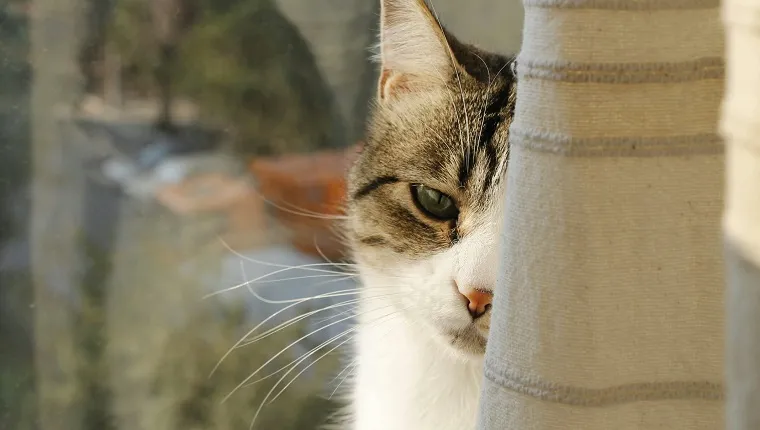Unlocking the Mysteries of Your Feline Friend’s Pain
As a seasoned animal expert, I’ve spent countless hours deciphering the subtle cues our furry companions give us, especially when it comes to their well-being. Among the most challenging tasks is recognizing when our beloved cats are in pain. Cats are masters at masking discomfort, making it tricky for even the most attentive pet parent to spot. But fear not! In this comprehensive guide, I’ll equip you with the tools and knowledge you need to tell if your cat is in pain and, most importantly, what to do about it.
Decoding the Signs: How Cats Express Pain
Cats, with their enigmatic demeanor, often hide their pain with finesse. However, they do leave behind a trail of clues for the astute observer. Here are some key signs to look out for:
Changes in Behavior
One of the earliest indicators of pain in cats is changes in behavior. Your typically sociable feline might become withdrawn and spend more time hiding. Conversely, an outgoing cat may become irritable or aggressive when approached.
Altered Movement Patterns
Observe your cat’s movements closely. Pain can manifest as limping, reluctance to jump, or difficulty in climbing stairs. You may also notice a decrease in grooming habits, as it can be painful for cats to bend and twist to groom themselves thoroughly.
Vocalizations
While cats are generally quiet creatures, they may vocalize more when in pain. Listen for meowing, yowling, or even hissing, especially if it seems out of character for your cat.
Changes in Appetite and Weight Loss
Pain can significantly impact a cat’s appetite. Look for changes in eating habits, such as refusing favorite foods or eating less overall. Weight loss can also occur if your cat is experiencing chronic pain.
Litter Box Issues
Pay attention to your cat’s litter box habits. Painful conditions like urinary tract infections or arthritis can cause your cat to urinate or defecate outside the litter box.
Understanding the Root Causes: Common Sources of Feline Pain
Now that you know what to look for, let’s delve into the potential sources of your cat’s discomfort:
Dental Problems
Dental issues, such as gum disease or tooth decay, are common culprits of feline pain. Keep an eye out for drooling, bad breath, or reluctance to eat hard food.
Arthritis
Arthritis is a prevalent condition in older cats and can cause significant discomfort. Watch for stiffness, reluctance to jump, and a decrease in overall activity level.
Urinary Tract Issues
Urinary tract infections, bladder stones, or other urinary issues can cause immense pain for cats. Symptoms may include straining to urinate, blood in the urine, or urinating outside the litter box.
Trauma or Injury
Accidents or injuries, such as falls or collisions with objects, can result in pain for your cat. Check for signs of swelling, bruising, or wounds, and seek veterinary care immediately if you suspect trauma.
Gastrointestinal Problems
Digestive issues, such as constipation, diarrhea, or inflammatory bowel disease, can lead to abdominal pain in cats. Look for changes in stool consistency or frequency, vomiting, or signs of discomfort when your cat is touched around the abdomen.
Taking Action: What to Do If Your Cat Is in Pain
Identifying that your cat is in pain is only the first step. Here’s what you can do to alleviate their discomfort and ensure they receive the care they need:
Consult with Your Veterinarian
Your veterinarian is your best ally in caring for your cat’s health. If you suspect your cat is in pain, schedule a veterinary appointment promptly. Your vet can perform a thorough examination, including diagnostic tests if necessary, to identify the source of your cat’s discomfort.
Follow Your Veterinarian’s Recommendations
Once the source of your cat’s pain is identified, follow your veterinarian’s recommendations for treatment. This may include medication, dietary changes, or other interventions tailored to your cat’s specific needs.
Provide Comfort and Support
In addition to medical treatment, you can provide comfort and support to your cat at home. Create a quiet and comfortable environment where your cat can rest undisturbed. Offer soft bedding and warm blankets to soothe achy joints, and ensure easy access to food, water, and the litter box.
Monitor Your Cat’s Condition
Keep a close eye on your cat’s condition and monitor for any changes in behavior or symptoms. Be vigilant for signs of improvement or worsening of pain, and communicate regularly with your veterinarian to ensure your cat’s needs are met.
Consider Preventative Measures
In some cases, preventative measures can help reduce the risk of pain and discomfort in your cat. This may include regular dental care, weight management, and providing enrichment and exercise to keep your cat healthy and active.
Conclusion
A Happy, Pain-Free Cat
Recognizing when your cat is in pain can be challenging, but armed with knowledge and observation, you can become adept at identifying subtle cues of discomfort. By taking prompt action and working closely with your veterinarian, you can ensure your cat receives the care and support they need to live a happy, pain-free life. So, keep a keen eye on your feline friend, and remember, a little extra love and attention can go a long way in keeping them healthy and content.
- Best Datanyze Alternatives for 2025 - April 19, 2025
- Best Leadfeeder Alternatives for 2025 - April 18, 2025
- Best LeadScrape Alternatives for 2025 - April 18, 2025



